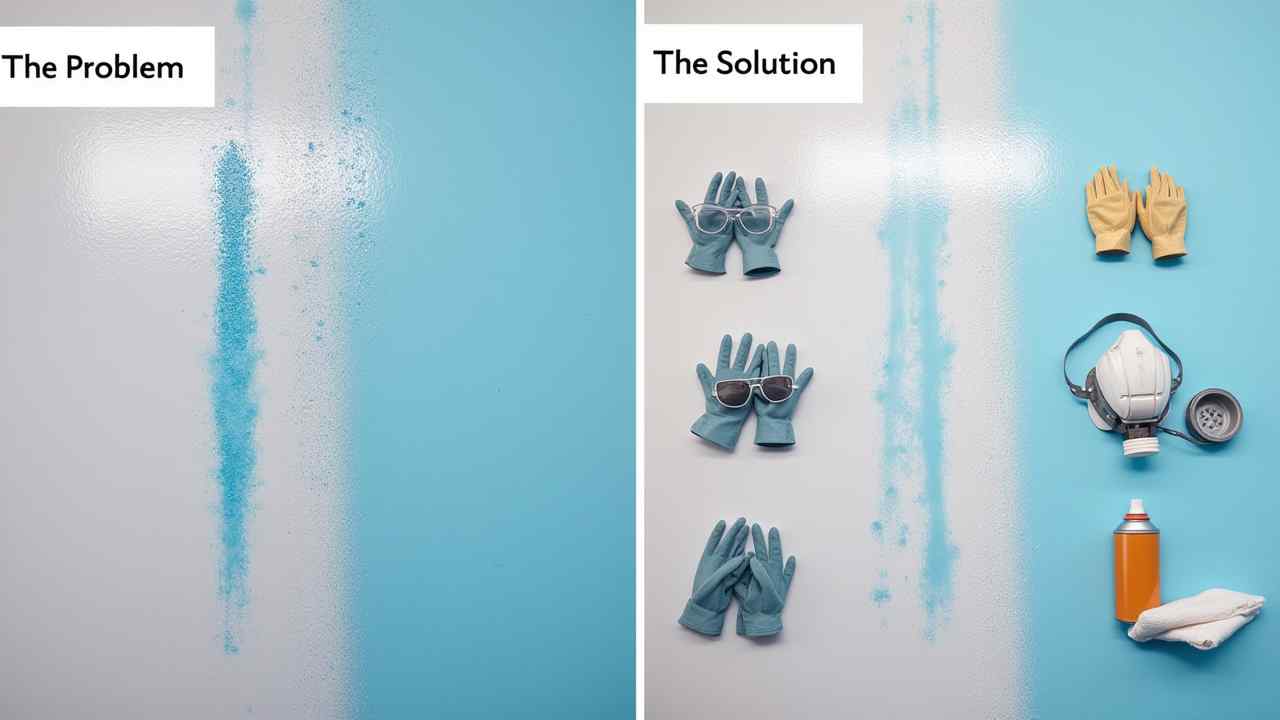
🧼 How to Dissolve Spray Paint Safely (A DIY Guide to Solvents)
🧼 How to Dissolve Spray Paint Safely (A Guide to Solvents & Surfaces) 🧼
❗ CRITICAL SAFETY WARNING: Dissolving spray paint involves using chemical solvents. These solvents can be flammable and produce strong, harmful fumes. You must ALWAYS work in a well-ventilated area (preferably outdoors) and wear appropriate Personal Protective Equipment (PPE), including chemical-resistant gloves and safety goggles. For stronger solvents, a respirator mask is highly recommended.
Whether it's an accidental overspray on your car or a DIY project gone wrong, stubborn spray paint can be a major headache to remove. Scrubbing alone rarely works and can damage the surface. The key is to dissolve the paint, not just physically remove it.
So, how do you dissolve spray paint safely? The answer depends entirely on two things: the type of surface and whether the paint is still wet or fully cured. This guide will walk you through the right methods for different situations. This is a perfect guide for cleaning up after your autumn DIY projects. 🍂
🤔 First, What is the Science of Dissolving Paint?
The core principle is simple: "Like dissolves like." Spray paint is typically an oil-based lacquer or enamel suspended in a solvent. To break it down, you need to use another solvent that can soften and dissolve those paint binders. Water and simple soap will not work on cured paint.
- How to Dissolve Spray Paint on Hard, Non-Porous Surfaces (Metal, Glass)
These are the easiest surfaces to clean. They can withstand stronger solvents without being damaged. This applies to metal tools, glass windows, or a car's clear coat (with caution).
- For Wet Paint: Immediately wipe with a cloth dampened with a paint thinner like mineral spirits.
- For Cured Paint: The most effective and common solvent is acetone. Apply acetone to a clean rag and rub the affected area. The paint should begin to soften and wipe away. For very stubborn, thick paint, a commercial paint stripper may be necessary.
- How to Dissolve Spray Paint on Porous Surfaces (Wood, Concrete)
This is much trickier. The paint and the solvent can soak into the surface, making it harder to remove completely. You must start with the gentlest method first.
- Start with Rubbing Alcohol: Isopropyl alcohol is less aggressive than acetone. Apply it to a cloth and scrub the area.
- Try a Graffiti Remover: Products specifically designed for graffiti removal are often formulated to work on porous surfaces like brick and concrete.
- For Wood: If solvents don't work, sanding the paint off may be the best non-chemical option. Always test a solvent on a hidden spot first to ensure it doesn't damage the wood's finish.
- How to Get Spray Paint Off Your Skin (The Safest Method)
This is a common problem after a project. You must NEVER use harsh solvents like acetone or paint thinner on your skin. These can cause severe irritation and chemical burns. The safest and most effective method is to use oil.
The Oil Method:
- Apply a generous amount of an oil like baby oil, olive oil, or coconut oil to the paint on your skin.
- Let the oil sit for a few minutes to start dissolving the paint binders.
- Gently rub the area in a circular motion with your hands or a cloth. The paint will start to break up and lift off.
- Wash the area thoroughly with soap and warm water to remove the oil and paint residue.
🚫 What Should You Always Remember?
Safety is the number one priority. Always work in a well-ventilated area to avoid inhaling fumes. Wear your gloves and goggles. And never work with flammable solvents near an open flame or a source of sparks. By choosing the right solvent for the job and following these safety rules, you can clean up any spray paint mess. ✨